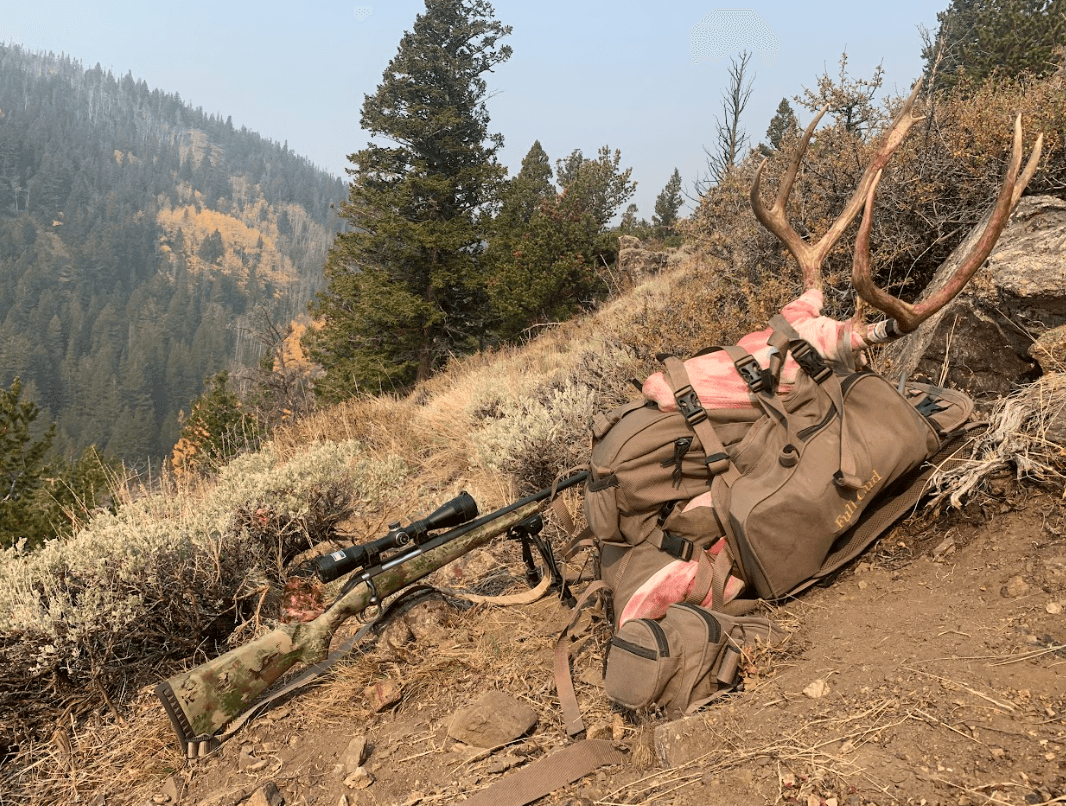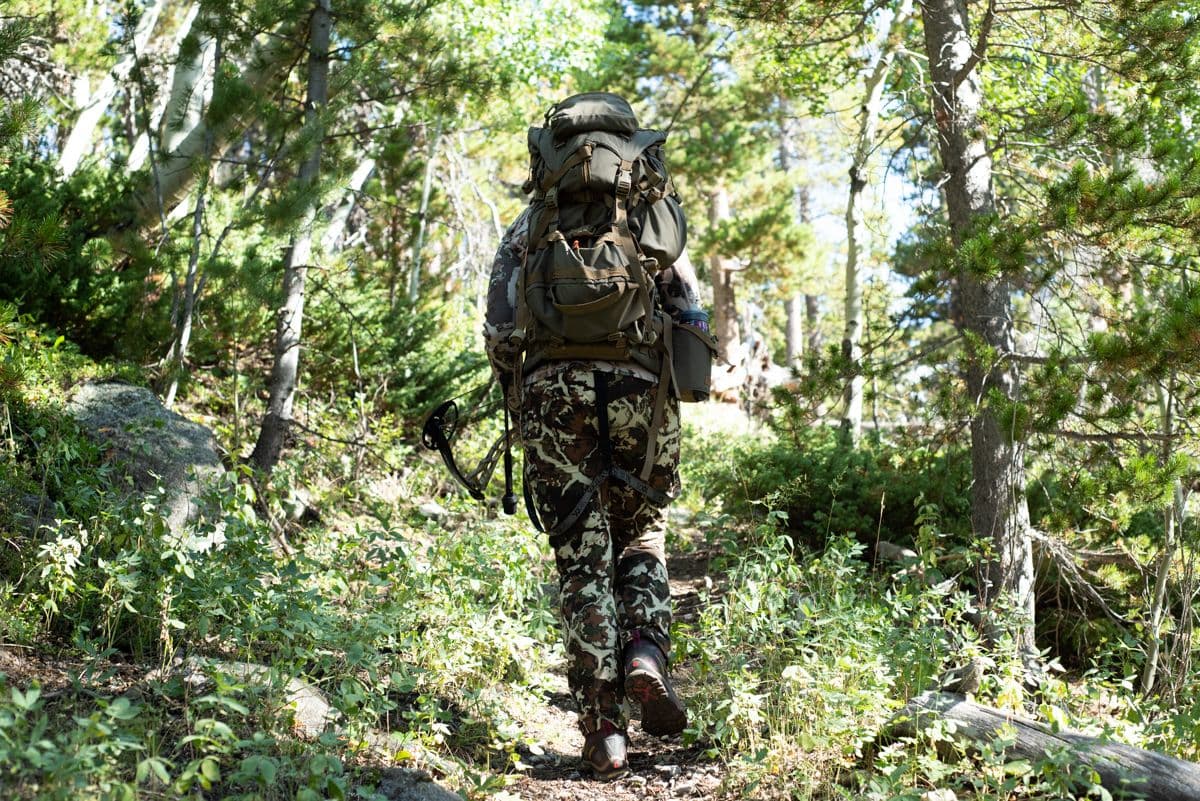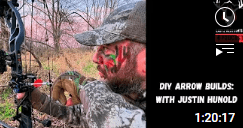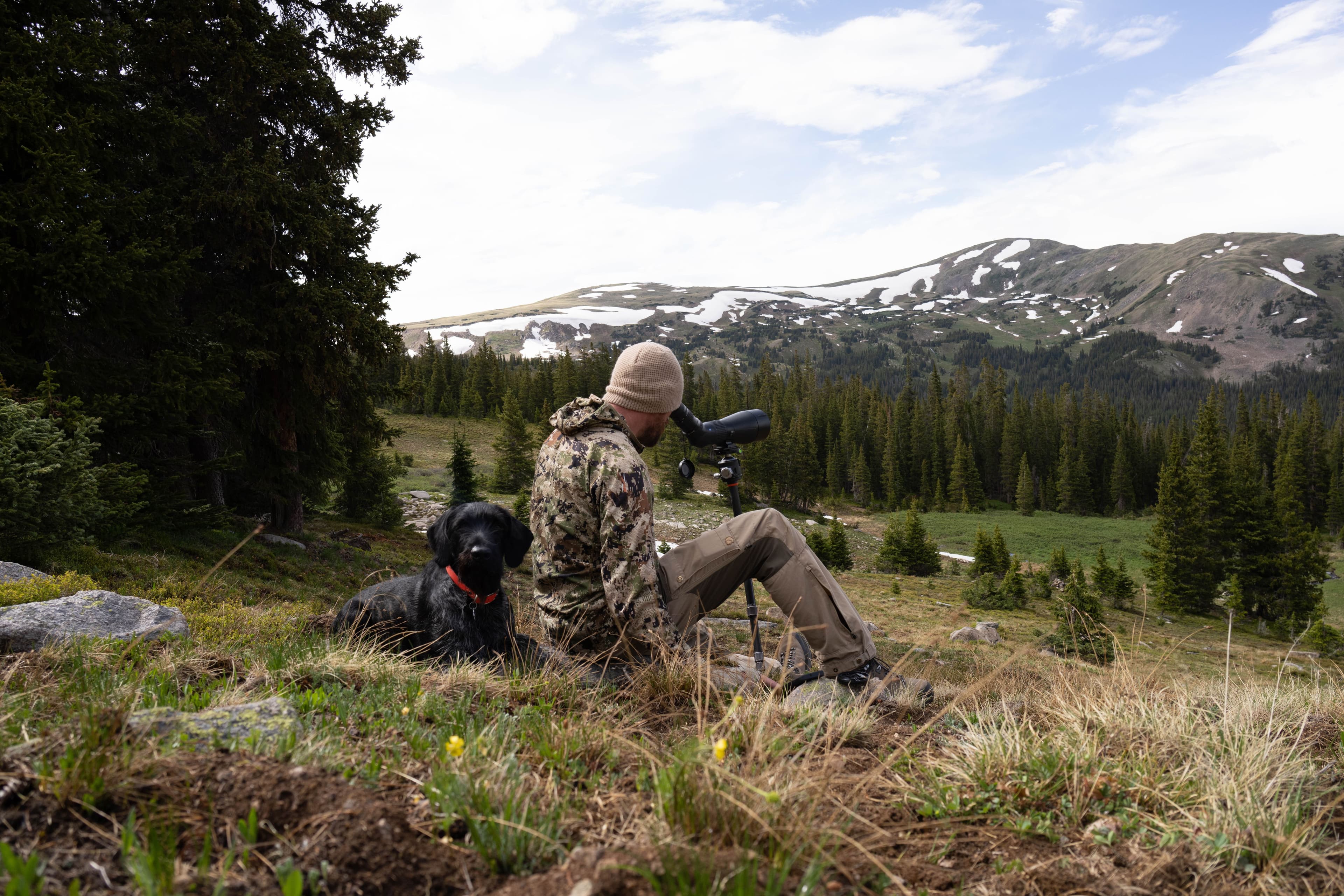Hunting Gear- The Essential List For Big Game Hunting Part 1


Justin Hunold
04/26/2024
Are you a part of the DIY hunting movement? DIY travel hunts are becoming more and more common. As season lengths, timing and tags get more condensed while the overall hunting population decreases, the hunters tend to be more dedicated and willing or have to travel to get opportunities at whatever success. DIY hunting can be as simple as driving to a different area in your home state or flying across the country, we all need the same stuff to get a hunt done.
We will take a look at some gear a hunter can't go without. So, whether it's a few hour's drive from home with an OTC doe tag or that backcountry hunt you had to draw a tag after years of planning, here is a gear 101 list that will work for either hunt and likely a lot of adventures in between.
Firearms and Ammunition
Weapon Of Choice
The Rifles and Bows
This is the meat of the hunt; you can wear anything, use any flashlight, or have any old pack to put your stuff in, but you can only hunt with a weapon: period, Full Stop. We will be looking at rifles and compound bows precisely because of the generality of this piece. Understanding that Muzzleloaders, Traditional Archery, Crossbows, and Shotguns all have their places in big game hunting, most hunters can tap the most significant portion of DIY hunting opportunities with a combination of a center-fire rifle and a Compound Bow.

Rifle
Let’s make this easy: there are a bunch of great rifles on the market in all sorts of calibers and operating systems, but for a general-purpose big game rifle, you should get a bolt action. They are arguably the strongest, most inherently accurate, reliable, and readily had rifles in the hunting space. Great rifles can be had at an entry-level price point through tens of thousands of dollars. Go to a gun shop and handle a few different guns. Get the one that speaks to you and feels right in your hands. Reputable manufacturers like Weatherby will have something for every budget and every purpose. An excellent bolt action rifle will fit the bill in almost every North American Big Game situation.
Look at some cartridges a hunter might want to consider for their all-purpose big game rifle. We will miss some perennial favorites, but we are focusing on one gun to get most things done. Taking into account the availability of rifles, ammunition, and information, this is a good general list.
- .30-06 Springfield—We are sending .30 caliber bullets varying from 125-220 grains down range at 2400-2900 fps. This is the Granddaddy of all the true North American do-all cartridges. It is versatile for almost any North American game.
- .308 Winchester - The Shorter, younger and more popular little brother of the 06, this cartridge excels in that 150-170 grain range and will put animals down. Great for deer, elk, and even bears at moderate ranges.
- .300 Winchester Magnum - If the 30-06 is the Granddaddy the .300 Win Mag is the Granddaddy that found TRT and a work out program. This round will send a 180 grain bullet down range at the same velocity that the 06 sends the 150. A bit more horse power and ballistic coefficient. Popular for its long-range capabilities and power.
- 7mm Remington Magnum - The Original do all Magnum. When Remington released the Model 700 it came in the 7mm Rem Mag and for a long time was the bride of the ball. This cartridge is known for its flat shooting and high velocity with bullets in similar weights to the most popular 30-06 loads.
- .270 Winchester - Jack O’Connors baby and an excellent for deer and elk, with manageable recoil. This was the 6.5 Creedmoor before the 6.5 Creedmoor existed. My own grandfather harvested his biggest Caribou at over 550 yards with one of these. Every animal I have ever shot with my own .270 looked like it was struck by lighting. THey just went down, with almost zero tracking to boot.
- 6.5 Creedmoor - You may have heard of it, since the Creedmoor has been the most popular centerfire big game round since it’s release in 2007 it has continuously been gaining popularity for its accuracy and efficiency. This round is a bit too small in some folks opinion but it’s very comparable to a .270 for bullet weight and a .308 in velocity.
- 7mm-08 Remington - This is a .308 necked down to a 7mm (.284) diameter bullet. This round didnt have any military contracts like the .308 or modern marketing like the Creedmoor but it might be the best all around short action hunting cartridge. Something about that .284 projectile class just hits a sweet spot. It’s a versatile and efficient mid-sized game cartridge.
Disclaimer—Any of the Short Magnums of the relative calibers will be great, as will the PRC rounds. Rounds like the Weatherby-based cartridges or 6.8 Western and .280 AI will fit the ticket, too, but the ammunition is not as abundant, and in most cases, almost all rifles will come chambered in the rounds listed above.
Bow

Gone are the days of “Hoping “ to hit your intended target with a compound bow. Today's compound bows are a marvel of modern engineering and manufacturing. A hunter can find a bow at almost any price point to hunt. With some bows starting at around $300 brand new and running up through a couple of thousand dollars for a flagship model, there is something for everyone.
You might be asking what the difference between a $300 and, say, a $1500 bow is, and for five times the price, that’s a great question: materials and technology. The more expensive models will have higher-quality components like limb material, metal hardware, and a higher-grade aluminum or carbon riser. The less costly bows will generally have a cast riser as opposed to the more expensive machined riser of the pricier bows. The limb pockets might be a type of plastic on the lower-end models, and likely, there are fewer bells and whistles like vibration-dampening options and higher efficiency cam setups.
The $300 bow will be a great option if that’s what is in your price range. The lower-end models of today have the technology of past flagship models. If you took a hunter from the early 2000s and handed them an entry-level bow from 2024, they would likely find it way more advanced, faster, quieter, smoother, and a better shooting experience than their 2010 flagship bow.
For the most North American Big Game, a 50-60 pound draw bow will be enough to get the job done. Bows today are so efficient that draw weight is not the only determining factor in the speed and momentum of the arrow. Most states have a minimum draw weight rating in the 30-40 lbs range. However, many states don’t have Elk, Moose, and Bears. A well-placed arrow with a sharp broadhead matters more than anything else, but I like to lean on the heavier end of my draw-weight window. My bow is set at 72 pounds.
Draw weights and draw lengths are adjustable. So, get fit for a bow at a pro shop. They will make sure that the draw length is correct. Then, choose a comfortable weight to draw from most field positions. For most grown men, the most popular route is to get a 70lbs draw weight bow and then lower the poundage to make it more comfortable to draw. Most archers view hunting bows a bit like carpentry; you can't cut a board longer, but you can always cut it shorter. You can’t add draw weight beyond the max, but you can always crank it down to a lighter weight.
Arrows have a different place in this conversation than rifle ammunition. Any quality factory-loaded hunting ammunition in the calibers listed above will kill anything you will generally be hunting. Arrows, however, need to be built for the bow and the game. Arrows are a game of compromise. A great arrow that doesn’t match the weight and length required for the bow won’t do the job. Add in a questionable broadhead, and it’s a recipe for disaster.
In most cases, a well-tuned arrow with a quality broadhead placed where it matters will do the job.
Check out this larger conversation about building arrows here:

For most general hunting, a good fixed blade head with an arrow spine matched to your bow and shot within a reasonable distance is the best bet for hunting. Many hunting folks today have gone to Mechanical broadheads, myself included. They are easy to tune and very forgiving but have more points of failure. I also shoot more weight up front in my arrow than a “stock” arrow. This has to do with momentum and kinetic energy. Again, in the world of compromise, I want an arrow that shoots at a reasonable speed to keep my pin gaps tight but has the mass and momentum to do the job, even if I hit a bone. As you learn more as a hunter, you can make informed decisions about all the gives and takes in gear. Everyone is different in terms of their comfort levels in all areas.
Optics
You can’t hunt without a weapon, you probably shouldn’t without high-quality optics. There is no sense in spending a ton on a rifle to put the wrong glass on it. The same goes for bowhunting without a rangefinder. Yardage judgment is a skill often inflated with ego and not as accurate as you need it to be when the time comes. Remember, we owe it to the animal to make the best shot possible; quality optics help that.
Binoculars are an essential piece of gear for most experienced hunters. I won’t go into the woods without my binoculars. A spotting scope can come into play during long-distance glassing sessions. Spotting Scopes are great for judging game from a distance. You cannot kill what you cannot see. Optics are an essential tool for North American big game hunting.

High-quality binoculars
This is non negiotabile for me. A quality set of binoculars is the base of the hunting system I am building. As far as nonwearable gear (not clothing, boots, or a pack), I will use this gear more than any other. But what should a hunter look for in the perfect all-around big game bino? I use my binos to spot distant games, verify hunches, map out stalks, pick routes through mountains and terrain, watch nongame animals, and get a closer look at other things that get me going.
Magnification is the first decision point. There are compromises with all outdoor gear, and even the magnification of your binos falls into that. Most folks use a magnification power of 8x, 10x, or 12x. The number X is the multiplication of magnification over the naked eye. This means a 10x is ten times more magnification than your normal vision. The higher the number, the closer things will look, but the higher the magnification, the lower the field of view (total space of the picture you're looking at), and the more shake will be noticeable. Moreover, the higher the power, the larger you will need the objective (front) lenses for light gathering, and they will also be larger and heavier.
We will write a separate piece about Binoculars, but a good 8x42mm or 10x42mm bino will get you through most hunting situations. You would be amazed at the ability to spot game by adding a tripod onto 10x42mm binoculars. This is precisely what I do for most hunting situations. Except I usually use a very high-quality 10x32mm Binocular. In optics, you get what you pay for, and glass quality trumps lens size and coatings ten times out of ten.
Rangefinder
Guessing yardage is a total thing of the past with the advent of cost-effective laser rangefinders. There is no reason to do that disservice to you or the game animal you are chasing. A rangefinder is right up there with binoculars for most big game hunters. With a bow, the difference between 40 and 45 yards can be between a punched tag or a wounded animal with no end to the track job. With a rifle, a rangefinder can help you extend your perceived effective range; a canyon might look too big to shoot across because your brain is estimating the ground distance, but the line of sight might put that same animal across the way within your comfort zone. Distance is deceiving like that.
There is no reason not to have an angle-compensating rangefinder. This is handy for ranging animals from a treestand, mountain top, cliff face, or any natural ground. Like the example of the canyon above, there will be extreme up and down angles where the range of flight differs from the range of ground covered. Angle compensation does this math for you.
If you’re inclined, and I am, you can combine the binos and rangefinder into one unit. A lot more folks are going this route for hunting. Why carry two pieces and have two points of failure when you have less to worry about and less bulk in your gear if you take a quality range finding bino?
Rifle Scope
A rifle is only as good as the glass on top of it. The quality of the glass, coatings, and overall package of today's rifle scopes is lightyears beyond what hunters of the past had for options. Today's scopes are lighter and stronger, have better definitions in the picture, and have very purpose-built and intuitive reticles.
With the world of long-range shooting and Precision Rifle Competitions exploding, there has been a quest for better quality scopes, more user-friendly reticles, and broader variable power ranges. Your dad may have had to choose between a 2-7x, a 3-9x, and a 4-12x scope in the past, but today, you can have your cake and eat it, too. A lower power for more field of view and fast shots can then be cranked up so that a distant animal looks much closer, and you can place that quarter-mile shot precisely on that animal.
I prefer to have my scopes mounted as low to the gun as possible; I also like to have a low power low end and moderate on the high end. The reason is simple: a 2x is great for fast target acquisition, and even at 400 yards, a 10x power will make that animal look 40 yards away. I shoot 40 yards with an open-sighted bow daily; I can certainly hold a set of crosshairs on something that looks 40 yards away.
Much like the rifle price range, scopes are the same. I plan on spending about as much on a scope as I did on the gun, if not more. Our friends at Athlon have built a scope that fits the ticket for almost all North American Big Game Hunting in their Helos.
I would look at the HELOS BTR GEN2 2-12×42 AHMR2 FFP IR MIL. Affordable, solid, and reliable are seldom associated with long-range shooting and hunting. The Helos BTR GEN2 is the exception. Advanced Fully Multi-Coated lenses and XPL coatings balance out this optic for various conditions. Cross-over features such as Locking turrets are not just for hunting; they instill confidence in mid to long-range shooters. FFP, Fully Multi-coated Lenses, Direct Dial and Locking Elevation & Windage Turrets, Illuminated Reticle, 30mm Tube, Zero Stop. This scope fits the bill for most Big Game Hunting situations.
This is the end of Part 1 of this run-down. Part two will have clothing, navigation, accessories, safety and first aid, camp gear, boots, and back packs. Please follow along as we get you outfitted for the field. Remember, there are discount codes for Infinite Outdoors members for what you need for the field. When you think about your next trip, remember to use Airbnb for hunting, which has a lot more to offer- Infinite Outdoors.